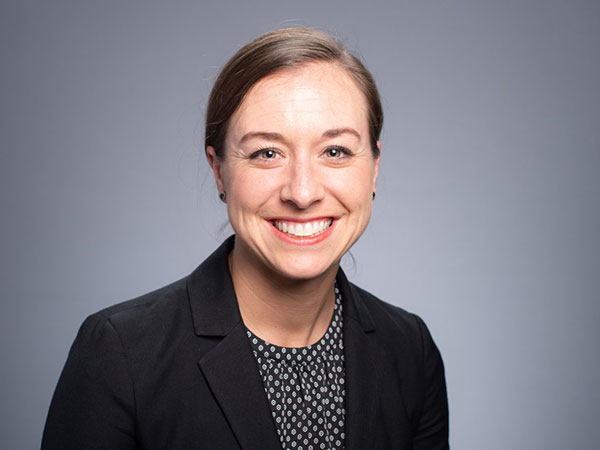New UAB research is combining mathematical modeling and advanced imaging to find the right mix of therapy for patients with a common subtype of breast cancer.
In fiscal year 2019, UAB researchers received a record $602 million in grants and contracts, marking a second year of double-digit percentage growth in funding. That productivity has carried on unabated in 2020, and you can follow along. Every Tuesday, Research Administration releases a list of the grants and contracts awarded the previous week (BlazerID required).
In this new series, we’re spotlighting new or re-funded projects to offer a window into the groundbreaking, lifesaving work done by our colleagues around campus. (See other stories in this series, profiling grants to accelerate HIV suppression, test a new strategy against lupus, stop online opioid sales and build freezers for the International Space Station.)
This week, we’re taking a look at a project to make breast-cancer therapy more precise using mathematical modeling and advanced imaging.
Project title: Personalizing Immunotherapy in HER2+ Breast Cancer through Quantitative Imaging
Principal investigator: Anna Sorace, Ph.D., departments of Biomedical Engineering and Radiology; co-investigators Erica Stringer-Reasor, M.D., Division of Hematology & Oncology, Jonathan McConathy, M.D., Ph.D., Department of Radiology, Jianmei Leavenworth, M.D., Ph.D., Department of Neurosurgery, Yufeng Li, Ph.D., Division of Preventive Medicine at UAB and Thomas Yankeelov, Ph.D., and Carla Van Den Berg, PharmD, at the University of Texas-Austin.
Funding: Four years, $1.63 million from the National Cancer Institute
 Anna Sorace, Ph.D.About 25% of breast cancers are driven by a mutation in the protein human epidermal growth factor receptor 2 (HER2). As the name suggests, HER2 promotes cell growth, and women with this form of breast cancer produce abnormally high levels of the protein. HER2-positive cancers tend to be more aggressive than other breast-cancer types. Treatments that target HER2 — such as trastuzumab (Herceptin) and pertuzumab (Perjeta) — are very effective for many patients, but “there are still about 50% of patients who do not have a complete response to these therapies,” said Anna Sorace, Ph.D., an assistant professor in the departments of Radiology and Biomedical Engineering, and an associate scientist in the O’Neal Comprehensive Cancer Center.
Anna Sorace, Ph.D.About 25% of breast cancers are driven by a mutation in the protein human epidermal growth factor receptor 2 (HER2). As the name suggests, HER2 promotes cell growth, and women with this form of breast cancer produce abnormally high levels of the protein. HER2-positive cancers tend to be more aggressive than other breast-cancer types. Treatments that target HER2 — such as trastuzumab (Herceptin) and pertuzumab (Perjeta) — are very effective for many patients, but “there are still about 50% of patients who do not have a complete response to these therapies,” said Anna Sorace, Ph.D., an assistant professor in the departments of Radiology and Biomedical Engineering, and an associate scientist in the O’Neal Comprehensive Cancer Center.
Immunotherapy treatments, including checkpoint inhibitors such as anti-PD1 and anti-PD-L1, hold promise to improve those percentages when used in combination with targeted therapies. Determining the best sequencing, dosing and timing of the combinations for each patient is no trivial matter, however. “There are essentially an infinite number of combinations,” Sorace said. And the answer is liable to be different depending on the patient. “Every tumor is different,” she explained. Part of the difference lies in the specific genetic changes driving the cancer, but “also due to the tumor’s vasculature and surrounding microenvironment,” Sorace said.
“This work really bridges a gap between engineering, imaging science, cancer and hopefully drives forward into clinical translation in the future.”
There are so many combinations that finding the optimal fix is not “something we can test in clinical trials or even solely in animal models,” Sorace said. So her team has developed a mathematical model describing HER2 response to targeted therapies that enables them to identify the best potential combinations in silico before they are tested in animal models and then translated to patients.
With a new R01 grant from the National Cancer Institute, Sorace is “extending that model to include more information on immune cell changes in response to immunotherapy to identify how to best guide these combination therapies.” As part of the work, she is tapping in to the imaging capabilities in UAB’s Small Animal Imaging Facility and Cyclotron Facility, including preclinical PET and MRI scanners and translational radiopharmaceuticals. “This work is heavily dependent on the quantitative information that we can extract from advanced imaging,” Sorace said. “We’re able to combine anatomical and functional information” about the tumor and its vasculature, as revealed by MRI, with “ information on changes in the tumor’s microenvironment — such as the amount of hypoxia, or lack of oxygenation in the tumor,” which is the domain of PET imaging.
“This work really bridges a gap between engineering, imaging science, cancer and hopefully drives forward into clinical translation in the future,” Sorace said.